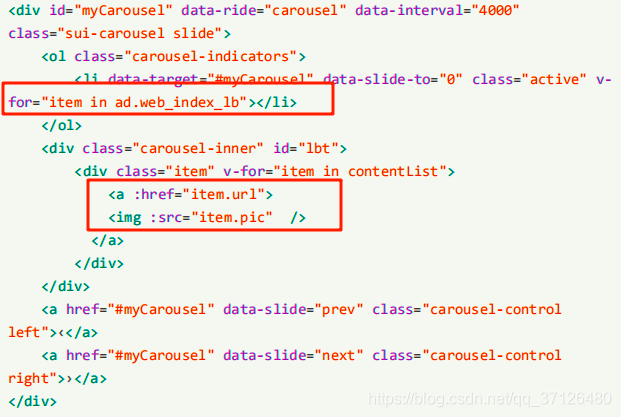广告二级缓存,加载实现思路
缓存预热:编写lua脚本实现缓存预热(将mysql里的数据查询出来存入redis)
二级缓存查询:编写lua脚本实现二级缓存查询(openresty先从本地获取数据 如果没有数据 则从redis里获取并存入本地)
步骤一:编写lua脚本实现缓存预热(将mysql里的数据查询出来存入redis)
步骤二:编写lua脚本实现二级缓存读取 (openresty先从本地获取数据 如果没有数据 则从redis里获取并存入本地)
缓存预热 (通过lua从mysql里写入redis)
1.实现思路:
定义请求:用于查询数据库中的数据更新到redis中。
(1)连接mysql ,按照广告分类ID读取广告列表,转换为json字符串。
(2)连接redis,将广告列表json字符串存入redis 。
2.定义请求:
请求: /ad_update
参数: position ‐‐指定广告位置
返回值: json
3. 编写lua脚本
在/root/lua目录下创建ad_update.lua ,实现连接mysql 查询数据 并存储到redis中。
ngx.header.content_type="application/json;charset=utf8" --响应方式
local cjson = require("cjson") --引入cjson
local mysql = require("resty.mysql") -- 引入mysql
local uri_args = ngx.req.get_uri_args()
local position = uri_args["position"]
local db = mysql:new() --开启mysql的新连接
db:set_timeout(1000)
local props = {
host = "192.168.200.128",
port = 3306,
database = "changgou_business",
user = "root",
password = "root"
}
local res = db:connect(props)
local select_sql = "select url,image from tb_ad where status ='1' and position='"..position.."' and start_time<= NOW() AND end_time>= NOW()"
res = db:query(select_sql) --执行sql语句
db:close() -- 关闭mysql
local redis = require("resty.redis")
local red = redis:new()
red:set_timeout(2000)
local ip ="192.168.200.128"
local port = 6379
red:connect(ip,port)
red:set("ad_"..position,cjson.encode(res)) -- 向redis存放什么内容
red:close()
ngx.say("{flag:true}")
4.修改nginx配置文件,添加执行lua脚本的请求
修改/usr/local/openresty/nginx/conf/nginx.conf文件:
代码如下 一访问ad_update 路径 就会从数据库读数据写入reids里

5.重新启动nginx

6.测试
测试:http://虚拟机地址/ad_update?position=web_index_lb
将数据从mysql里写入redis 然后查看redis里的数据 (如果没有数据 注意上方lua语句中sql语句的时间条件
再看数据库中是否符合)
扫描二维码关注公众号,回复: 9605460 查看本文章
广告缓存读取 (一级缓存读取,读取redis)
1.实现思路:
通过lua脚本直接从redis中获取数据即可。
2.定义请求:
请求:/ad_read
参数:position
返回值:json
3.编写lua脚本
在/root/lua目录下创建ad_read.lua (读取redis里的数据)
ngx.header.content_type="application/json;charset=utf8"
local uri_args = ngx.req.get_uri_args();
local position = uri_args["position"];
local redis = require("resty.redis");
local red = redis:new()
red:set_timeout(2000)
local ok, err = red:connect("192.168.200.128", 6379)
local rescontent=red:get("ad_"..position)
ngx.say(rescontent)
red:close()
4.修改nginx配置文件,添加执行lua脚本的请求
在/usr/local/openresty/nginx/conf/nginx.conf中server下添加配置
location /ad_read {
content_by_lua_file /root/lua/ad_read.lua;
}
5.重启nginx
6.测试
测试 http://192.168.200.128/ad_read?position=web_index_lb 输出
[{"url":"img\/banner1.jpg","image":"img\/banner1.jpg"},
{"url":"img\/banner2.jpg","image":"img\/banner2.jpg"}]
二级缓存—加入openresty本地缓存
如上的方式没有问题,但是如果请求都到redis,redis压力也很大,所以我们一般采用多级缓存的方式来减少下游系统的服务压力。
先查询openresty本地缓存 如果没有再查询redis中的数据
1. 修改读取数据的lua脚本
修改/root/lua目录下ad_read文件, 内容如下:
先查询本地缓存,如果有直接返回,如果没有数据,进行redis的缓存查询,并添加到本地缓存中。
ngx.header.content_type="application/json;charset=utf8"
local uri_args = ngx.req.get_uri_args();
local position = uri_args["position"];
local cache_ngx = ngx.shared.dis_cache; --开启本地缓存
local adCache = cache_ngx:get('ad_cache_'..position); --在本地缓存中查询相关数据
if adCache == "" or adCache == nil then --本地缓存没内容 查询redis
local redis = require("resty.redis");
local red = redis:new()
red:set_timeout(2000)
local ok, err = red:connect("192.168.200.128", 6379)
local rescontent=red:get("ad_"..position)
ngx.say(rescontent)
red:close()
cache_ngx:set('ad_cache_'..position, rescontent, 10*60); -- 从redis保存到本地缓存
else
ngx.say(adCache)
end
2. 修改nginx配置,开启共享内存
修改nginx配置文件vi /usr/local/openresty/nginx/conf/nginx.conf ,http节点下添加配置 (放到最后一行)
#包含redis初始化模块
lua_shared_dict dis_cache 5m; #共享内存开启
3.重启nginx
前端页面实现(了解)
在页面上添加
…
(1)修改index.html,编写脚本

(2)修改index.html,渲染广告轮播图
(3)上传至服务器并测试
更改nginx的配置文件


